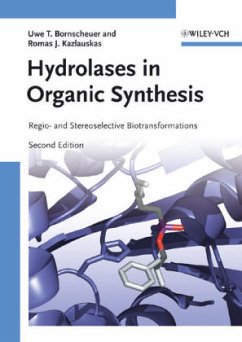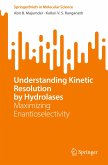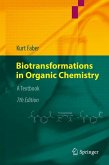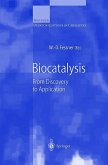Das wichtigste Problem eines Organischen Chemikers, der mit Enzymen arbeiten will, ist die Wahl des richtigen Enzyms, die ihm das vorliegende Werk entscheidend erleichtert.
Das Buch befasst sich erstens mit den heutzutage gebräuchlichsten Enzymen, den Hydrolasen. Zum zweiten enthält es eine umfassende Zusammenstellung der bekannten Anwendungen, was eine vernünftige Wahl des Enzyms ermöglicht. Drittens wird eine Übrsicht über die Strukturen von Hydrolasen gegeben und aufgezeigt, wie diese Strukturen mit den beobachteten Selektivitäten zusammenhängen. Dies liefert einen weiteren Weg, Hydrolasen auszuwählen. Zum vierten sind experimentelle Richtlinien enthalten, wie die Hydrolasen anzuwenden sind.
Somit können Organische Chemiker und auch Enzymologen sehr schnell mit der Lösung ihrer Syntheseprobleme beginnen.
Das Buch befasst sich erstens mit den heutzutage gebräuchlichsten Enzymen, den Hydrolasen. Zum zweiten enthält es eine umfassende Zusammenstellung der bekannten Anwendungen, was eine vernünftige Wahl des Enzyms ermöglicht. Drittens wird eine Übrsicht über die Strukturen von Hydrolasen gegeben und aufgezeigt, wie diese Strukturen mit den beobachteten Selektivitäten zusammenhängen. Dies liefert einen weiteren Weg, Hydrolasen auszuwählen. Zum vierten sind experimentelle Richtlinien enthalten, wie die Hydrolasen anzuwenden sind.
Somit können Organische Chemiker und auch Enzymologen sehr schnell mit der Lösung ihrer Syntheseprobleme beginnen.
"...for those who have not previosly purchased the first edition, this is an excellent buy. (...) The subject matter is discussed from the view point of the organic chemist and the chapters are arranged by functional group transformations rather than by enzyme type. This makes for an easy-to-read text, nicely separated by schemes and figures, all beautifully produced. In conclusion, this second edition should be in every library interested in organic synthesis." - Organic Process Research & Development Journal








